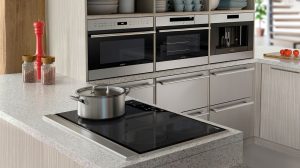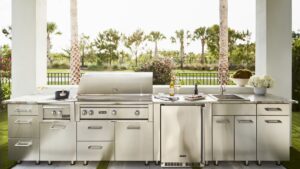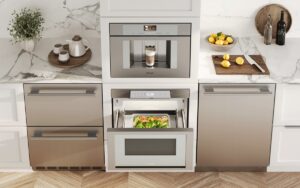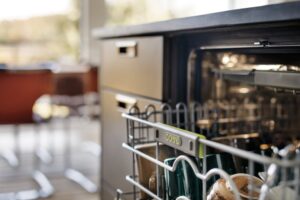Unlocking the Secrets of the Convection Oven

If you’re planning on replacing or upgrading your oven, you’re likely to have discovered convection ovens. While a convection oven may cost a little more, they can provide some fantastic benefits for any keen chefs or bakers. So, here we will explore convection ovens and whether one could be the right option for your kitchen.
The Convection Basics
The term “convection” may take you back to your high school science class. Don’t let this discourage you, as the basic principles of convection ovens are actually quite simple. Unlike a regular oven, convection models have a fan and exhaust system, allowing hot air to be blown around the oven cavity around your food before it is vented out. As the warm air surrounds your food, it promotes quicker and more even cooking.
The Benefits of Convection Ovens
There are a number of reasons why convection ovens have become a popular option for home use. The most obvious reason is that they provide faster cooking. The circulating hot air speeds up the cooking time, making these ovens an excellent option for people with a busy lifestyle.
Convection ovens also provide more even cooking. This is a great feature for any type of cooking, but it is particularly beneficial for baking. Great baking results need even heat, or you can end up with lopsided bread or unrisen cakes. Convection also promotes even and beautiful browning. Regular ovens can create a humid atmosphere as the moisture is trapped inside the oven cavity. Convection ovens produce a dry heat, so sugars are caramelized more quickly to start the delicious browning process.
Since your food is cooking faster, you can also save energy using a convection oven. Regular ovens tend to use more energy to reach and maintain the desired temperature. Convection ovens circulate heated air, which allows the temperature to be more easily and efficiently maintained.
Whether you enjoy baking pies, cookies, cakes or pastries, or simply like to prepare a great meal in a hurry, a convection oven can provide the best option for your kitchen.
Tips for Baking in a Convection Oven
Since a convection oven does operate in a different way to a regular oven, it can take a little getting used to before you can produce fantastic dishes and baked goods. Fortunately, there are some tips and tricks to help you get started.
Firstly, you need to lower your cooking temperature. Since both heating and cooking are more efficient in a convection oven, you won’t need as high a temperature to achieve the same results. Generally, you can lower your temperature by 25ºF when following a recipe.
Additionally, the improved efficiency means that you’ll also need to check your food more frequently. Check your dish at the midpoint of the recommended cooking time to gauge when it will be done. You’ll need to tune your senses a little to use the appearance and smell of your dish rather than a timer. As you become more familiar with using a convection oven, you’ll gain more confidence in predicting cooking times.
You should also avoid crowding your oven as convection relies on circulating air. If your oven is packed with food, it will be less efficient as the air flow is blocked. You should also try to use low sided roasting pans and baking sheets to allow better circulation and create crispier foods. Of course, this is less important for a cake or casserole where crisping isn’t essential.
Finally, the dry environment of a convection oven isn’t ideal for some dishes. If you’re baking a soufflé, custard or some types of cake, you may need to add a little moisture for optimum baking conditions. Some convection ovens feature a regular cooking mode, and this should be employed for these types of food.
If you’re thinking about upgrading your oven, you can explore the options with this collection of convection ovens and ranges or speak to a home appliance expert for a more specialized service.
- The Ultimate Outdoor Grill Guide for 2025: Built-In vs. Freestanding
- Smart Bathroom Faucets & Fixtures in 2025: Blending Technology with Luxury Design
- Built-In Coffee Machines: Are They Worth It for Your Kitchen in 2025?
- How to Choose the Right Dishwasher for Your Home: Noise, Capacity, and Features Explained
- Top 5 Kitchen Appliance Colors and Finishes for 2025 (And How to Match Your Style)
- Why a Countertop Ice Maker is a Must-Have for Summer Kitchen Upgrades in Southern California
- How to Remove Scratches from Stainless Steel Luxury Appliances
- When Is the Best Time to Buy Appliances? Your 2025 Buying Guide
- The Ultimate Guide to Outdoor Beer Dispensers: Elevate Your Backyard Entertaining in 2025
- Choosing the Perfect Bathtub: Freestanding vs. Built-In Styles for a Luxury Bathroom






